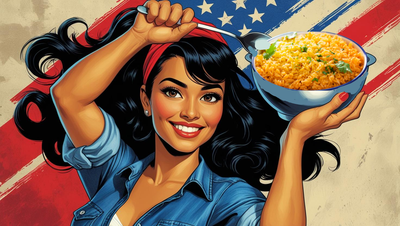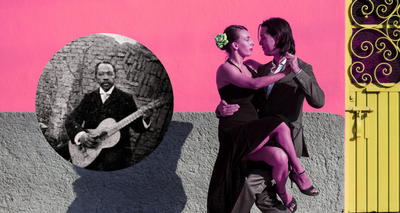Not many people know this, but before the sixteenth century, the native people or indigenous of Latin America had never set eyes on a horse. That’s right: they were introduced to the continent by the Spanish conquistadors during the Conquest of America, in the 1400s. Shortly after that, riding became a deep-rooted element of Latin American economy, religion and culture, with many social uses in agriculture, rituals and celebratory events.
In this article, we’ll go over a few Latina horse riding cultures throughout Latin America and how they defy gender roles thanks to their key involvement.
Mexico’s Charras, A Long-Lasting Tradition Both In The United States and Mexico
If you are Mexican or of descent then maybe you’ve heard of the charrería. This is a cultural tradition that has its roots in the Spanish’s charreada, a competitive event with many equestrian activities that were introduced through colonization during the 16th century along with the horses.
Today, many charros (“cowboys”) continue with tradition, to the point that this activity was named the National Sport of Mexico in 1933 by the Federación Mexicana de Charrería. This sport has crossed over (or perhaps never left) to the United States where Mexicans and Mexican-Americans have continued the centuries-old sport of their ancestors. Grown in popularity, escaramuza charras organizations exist all over the country.
In the beginning, this cultural activity was a male-dominated practice, through which many Mexican men displayed “a patriarchal, aggressive, and violent form of masculinity,” according to Laura R. Barraclough, Associate Professor of American Studies at Yale University. Initially, gender inequality was deeply ingrained in the structure of the sport. Although aspiring Latina horse riders were involved in charrería, their roles were confined to traditional and stereotypical positions, such as queens or as supportive wives and mothers working in the background.
The only event in which charras, women horse riders could compete freely was the escaramuza (translated to “skirmish”), where charros also performed complex equestrian exercises as a group while music was synchronized to their routines. In a National Geographic article, the photographer of stunning photos of escaramuza charras says, “It’s elegant and powerful—and also kind of dangerous.” Up to this day, their routines take place midway through a charreada, and are not officially judged or scored (except when the groups compete against one another in separate all-female rodeo events.)
Thankfully, the sport has evolved as time progressed, and many Latina horse riders or charras have found in this activity a place of empowerment both for themselves and others. For instance, in 2022, Esther Venegas Rodríguez, a native of San Martin de Hidalgo, has founded a school that trains girls and teens how to be proper charras.
“With all the exercises we form a routine that gives us points in the competitions, but the most important thing is to have the courage to ride a horse. The girls already have that love for horses, it is only necessary to train coordination and be attentive,” she explained in an interview with SWI in Spanish.
In recent years, its practitioners created equestrian escaramuza organizations to professionalize and protect this sport under Intangible Heritage of Humanity by UNESCO in 2018.
Video Credit: CBS Texas
Vaqueras of Colombia: Challenging Norms in Competitive Riding
In the heart of Colombia, where the Andes meet the plains of Los Llanos, lies Villavicencio, a city where women have reigned for at least four years. The same amount of time the city has held the World Championship of Vaqueras, one of the main attractions in the region. In fact, the description featured in their official Instagram account reads, “Mujeres con los pantalones bien puestos” (“Women who wear their pants right”)
Whether you are a country mouse or a city mouse, everyone is welcome to participate in various competitions, such as the eagerly awaited lasso test, the most eagerly awaited. The Latina horse riders must tie a bull by the head or by the horns in the shortest time possible, which is no easy feat. There are other tests that rank the competitors’ agility or dexterity, but not all events are horse riding: cow milking the most amount of liters is also a skill many showcase with pride.
From the sidelines, many young girls watch the competition with a gleam in their eye, hoping to become a horse rider just like their heroines and their saddled steeds.
Brazil’s Vaqueiras, A Mixture of Tradition and Pop Culture
When thinking about the beautiful country of Brazil, you’d probably picture paradisiac beaches with crystal-clear waters and white-colored sand. However, far from the shores of Ipanema, there is a rural community who takes pride in their horses, cattle and/or bulls. In fact, despite the language difference, Brazilian horse riding women are not so different from the Spanish-speaking ones, and have been riding towards the horizon for quite some time now. But what sets these vaqueiras apart from the others? The influence of pop.
That’s right! Cowboy and pop cultures are intertwined in one of Brazil’s most important events in rural communities: the Festa do Peão de Barretos, the largest rodeo in the Southern hemisphere. This festival (which can be translated as “Cowboy Festival of Barretos”) is a world-famous celebration filled with fierce competitors and sertaneja stars, a traditional music genre.

Even though this male-dominated event doesn’t allow women to compete in bull riding, they are starting to make their mark in the rural scene by demonstrating their roping skills or riding horses, like the case of Rebeca Letícia Vetuche.
“It's very gratifying to maintain the cowboy tradition as a woman,” she said in an interview with El País.
But where is the pop aspect in all of these? It’s all about the aesthetic and fits: rhinestones, leather fringes, jewelry and the must-have fuchsia-colored hats. Female attendees and participants carefully plan what they will wear months in advance, and it shows, for the devil is in the details.
“I've been preparing for years to be the queen of this party,” Yanca Cristina Oliveira de Souza states in an interview with El País.
Horseback Riding: The Sport of Gender Equality
Women in various Latin American cultures empower themselves through riding, reflecting a global phenomenon. If you’ve watched horseback riding or equestrian events in the Olympics, you may have noticed that this is the only sport in which men and women compete side by side, in categories such as dressage, show jumping and vaulting.
So the next time you view riding as merely a man’s sport, pause and reconsider, these charras and vaqueras have a powerful hold on the culture.






